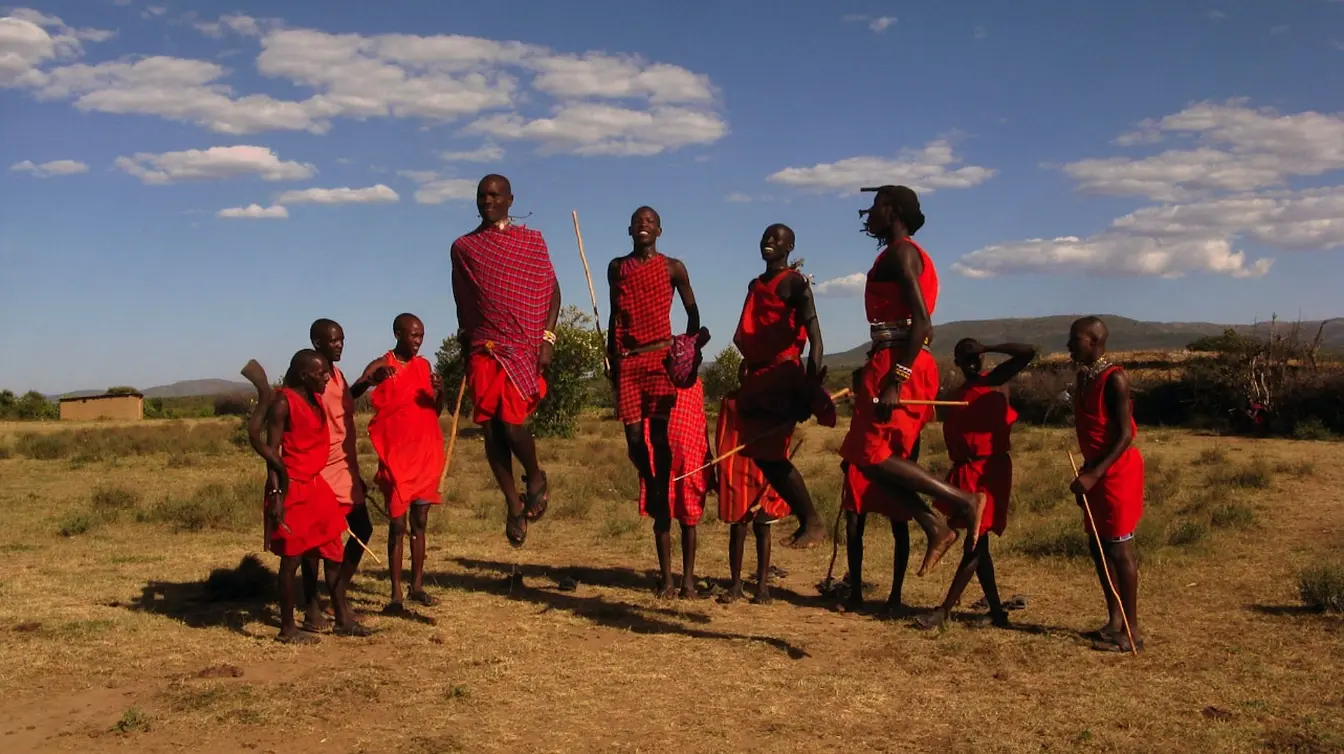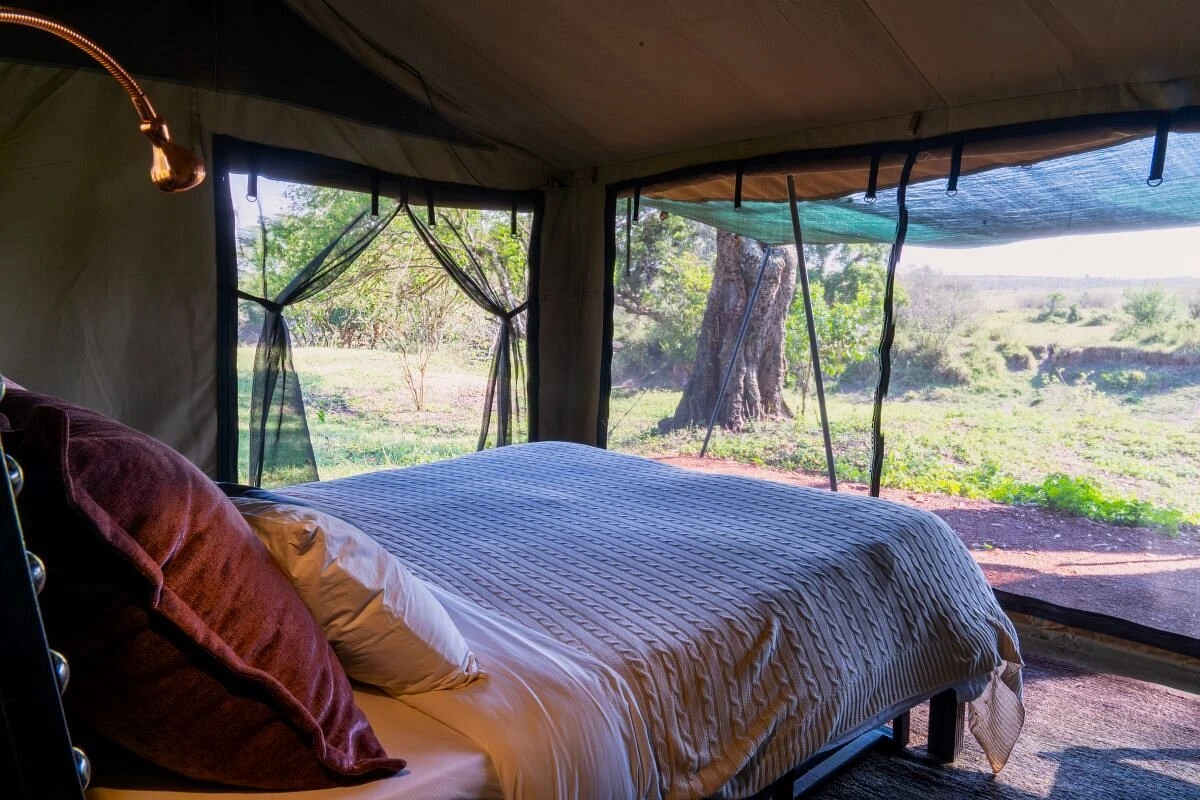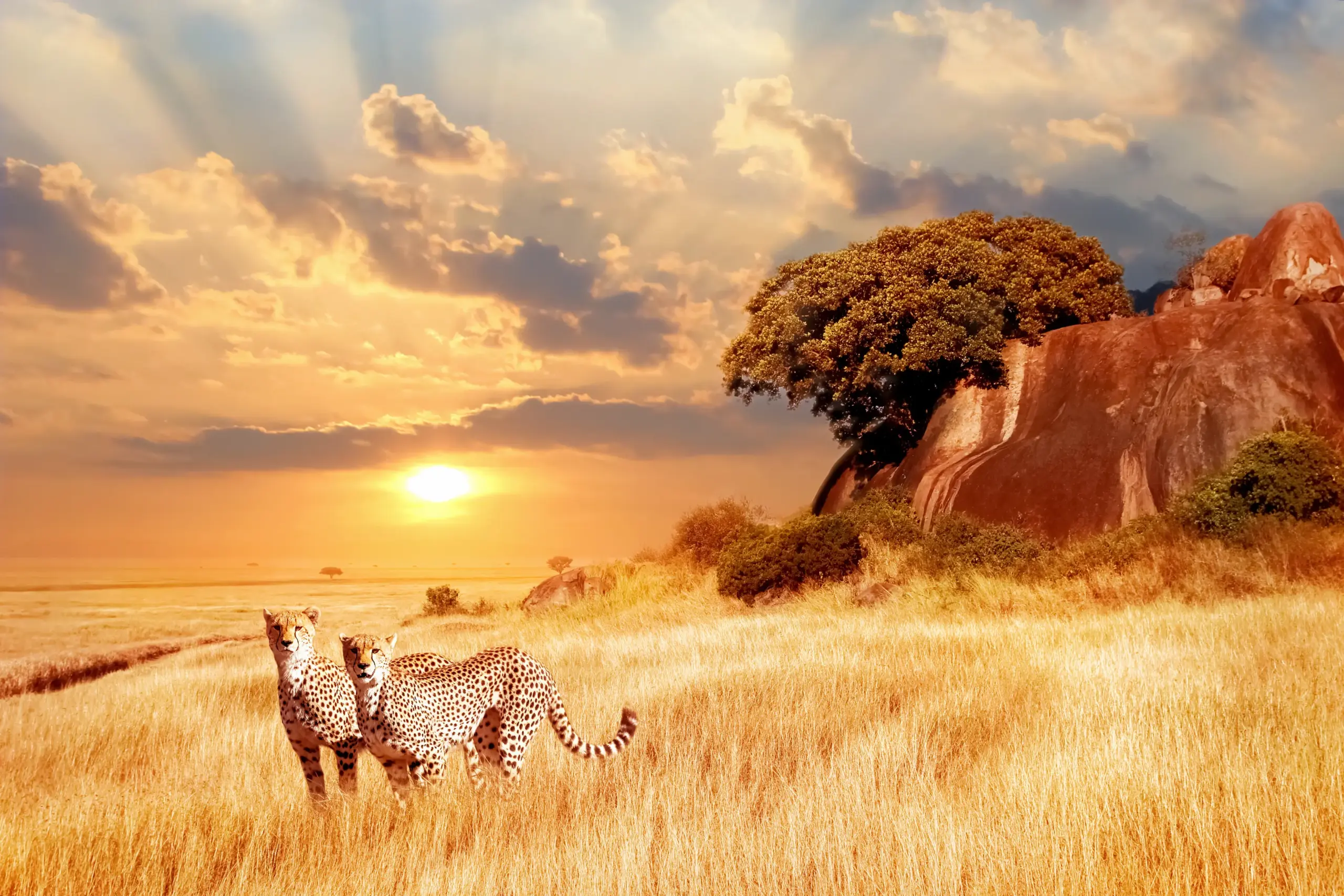When to visit Masai Mara in Kenya for a safari
A Masai Mara safari is always an incredible experience, no matter when you go. While the Great Migration often plays a key role in planning a visit, this world-famous reserve has far more to offer beyond the spectacle of thundering wildebeest herds. Every season unveils a different side of the Masai Mara National Park, ensuring an adventure filled with discovery at any time of the year. Whether it’s the lush greenery of the rainy season or the vast golden plains of the dry months, Kenya’s top wildlife destination never ceases to amaze with its diverse landscapes and thriving resident animals.
Best time to Visit Masai Mara: Video
The Great Wildebeest Migration: A Natural Phenomenon in the Maasai Mara
Regarded as one of nature’s most breathtaking spectacles, the Great Migration unfolds in the Masai Mara from July to October. During these months, approximately 1.5 million wildebeest, accompanied by zebras and other grazers, embark on their perilous trek from Tanzania’s Serengeti National Park into the Masai Mara. This seasonal journey transforms the vast savannah into a scene of unrelenting movement, culminating in dramatic river crossings at the Mara and Talek Rivers. The drier climate during this time causes vegetation to recede, creating optimal conditions for unparalleled wildlife sightings.
Although the Masai Mara Reserve is a year-round safari destination, many travelers schedule their trips to coincide with the Great Migration. However, this peak season also brings an influx of visitors, leading to crowded game drive routes and long lines of safari vehicles. Those seeking a quieter, more private safari experience might consider visiting Kenya during the off-peak months or opting for one of the Masai Mara’s exclusive conservancies. By carefully selecting when and where to visit, travelers can witness the wonders of the migration while avoiding the congestion of the busiest tourist periods.
The Lion Season: Predators on the Prowl
Following the abundant rains, the Masai Mara transforms into a thriving nursery, where newborn wildebeest, zebras, and other herbivores take their first steps on the open plains. This increase in prey sets the stage for thrilling predator activity, as lions, cheetahs, and leopards take full advantage of the abundance of young and inexperienced animals. From January to March-often referred to as the ‘Lion Season’- big cats dominate the landscape, offering unmatched opportunities to observe their hunting strategies and social dynamics. With the rains fading and grass levels lowering, visibility improves, making this an excellent time for tracking prides as they roam the reserve in search of their next meal.
The Green Season: A Lush and Vibrant Paradise
Between March and May, the arrival of the long rains transforms the Masai Mara into a verdant wonderland. The once-dusty plains flourish into a lush, emerald expanse, creating a striking contrast against the golden hues of the African savannah. This rejuvenation provides a feast for herbivores, while carnivores remain ever watchful for vulnerable newborns scattered across the landscape. The season is particularly rewarding for birdwatchers, as migratory birds flock to the Mara, adding bursts of color and melody to the scenery.
In addition to the incredible wildlife experiences, the Green Season offers another advantage- fewer tourists and significantly lower accommodation rates. Many lodges and tented camps provide special deals, making this an ideal time for travelers seeking a more budget-friendly safari without compromising on quality. Though some visitors prioritize the Great Migration, those venturing to the Masai Mara during this period can enjoy a more intimate and immersive safari, with uncrowded game drives and exclusive wildlife encounters.
By understanding the different seasons of the Masai Mara, travelers can plan their visit to match their interests- whether witnessing the sheer drama of the Great Migration, experiencing the intense predator action of Lion Season, or soaking in the tranquility of the lush Green Season. Regardless of the timing, the Masai Mara remains a world-class safari destination that never ceases to amaze.
Annual Overview of Masai Mara
Masai Mara’s Seasons: What to Expect Year-Round
January – February
The start of the year is marked by hot, dry weather, with high daytime temperatures and minimal rainfall. As water sources dwindle, animals gather around waterholes, offering superb wildlife viewing opportunities. Bird enthusiasts will also find this an exciting time, as migratory species arrive, adding to the Masai Mara’s already diverse wildlife.
March – April – May
This period ushers in the long rains, one of the two rainy seasons experienced in East Africa. While temperatures remain warm, April sees the heaviest rainfall, transforming the Masai Mara into a lush, green paradise. The vibrant vegetation provides a stunning contrast to the dry months, creating an ideal setting for photographers and nature lovers. Though this is considered low season, the rejuvenation of the landscape enhances the safari experience.
June – July – August – September – October
This is the most sought-after time to visit, thanks to mild temperatures, dry weather, and clear skies. It’s also when the great wildebeest migration unfolds, drawing visitors from around the world. Between June and late July, massive herds of wildebeest, zebras, and other grazers cross the crocodile-infested Mara River, an awe-inspiring sight that showcases nature’s raw survival instincts. The annual wildebeest migration is one of the most dramatic wildlife spectacles on the planet, making this the peak season for safari-goers.
November – December
The short rainy season begins, bringing varying rainfall patterns and occasional afternoon showers. The rain breathes new life into the plains, fostering fresh greenery and creating a picturesque backdrop for game drives. While mornings can be crisp, temperatures remain warm throughout the day. Despite the showers, wildlife remains highly active, ensuring an immersive safari experience.
Dry vs. Rainy Season: When to Visit Masai Mara
Your ideal safari timing depends on what you’re looking for. Here’s how the dry and wet seasons compare:
Dry Season (June – October)
Advantages:
– Less vegetation means better visibility for spotting wildlife.
– Animals concentrate around water sources, increasing sighting chances.
– Mostly dry, pleasant weather.
– Fewer mosquitoes, lowering the risk of malaria.
– Best time to witness the great wildebeest migration and dramatic river crossings.
Drawbacks:
– Large tourist crowds, especially in the Masai Mara National Reserve.
– Higher travel costs during peak season.
– Chilly mornings and evenings, requiring warm clothing.
Rainy Season (November – May)
The two rainy seasons in East Africa shape the landscapes and wildlife patterns of the Masai Mara, offering unique experiences for visitors. The long rains (March–May) and short rains (November–December) bring distinct changes to the ecosystem.
Advantages:
– More affordable rates compared to peak migration months.
– Fewer tourists, allowing for a more private safari experience.
– An excellent time for birdwatching.
– Lush, green landscapes with flourishing flora.
Drawbacks (especially in April and May):
– Roads can become muddy and difficult to navigate.
– Heavy rains may disrupt outdoor activities.
– Some safari lodges and camps close for maintenance.
– Rivers may overflow, affecting access to certain areas.
Regardless of when you visit, the Masai Mara National Reserve offers unforgettable wildlife encounters and breathtaking landscapes, making every season special in its own way.
When to Visit Masai Mara: Send Your Inquiry for a Safari
We trust this guide has provided you with all the necessary insights to confirm that the Masai Mara is an ideal destination for your upcoming travel adventure. Do you still have questions? Or perhaps you need detailed information about the various lodges? Please fill out the contact form, and we will respond promptly! You can also reach us through our email at [email protected] or [email protected]. We are also available via WhatsApp or Phone at +254 748 258880.
Altrnatively, you ca visit our social media platforms for more information:
Welcome to AjKenya Safaris
Thanks for stopping by! We’re excited to help you plan an unforgettable safari.
- Phone: +254 748 258880
- WhatsApp: +254 748 258880
- Email: [email protected]
- Email: [email protected]





